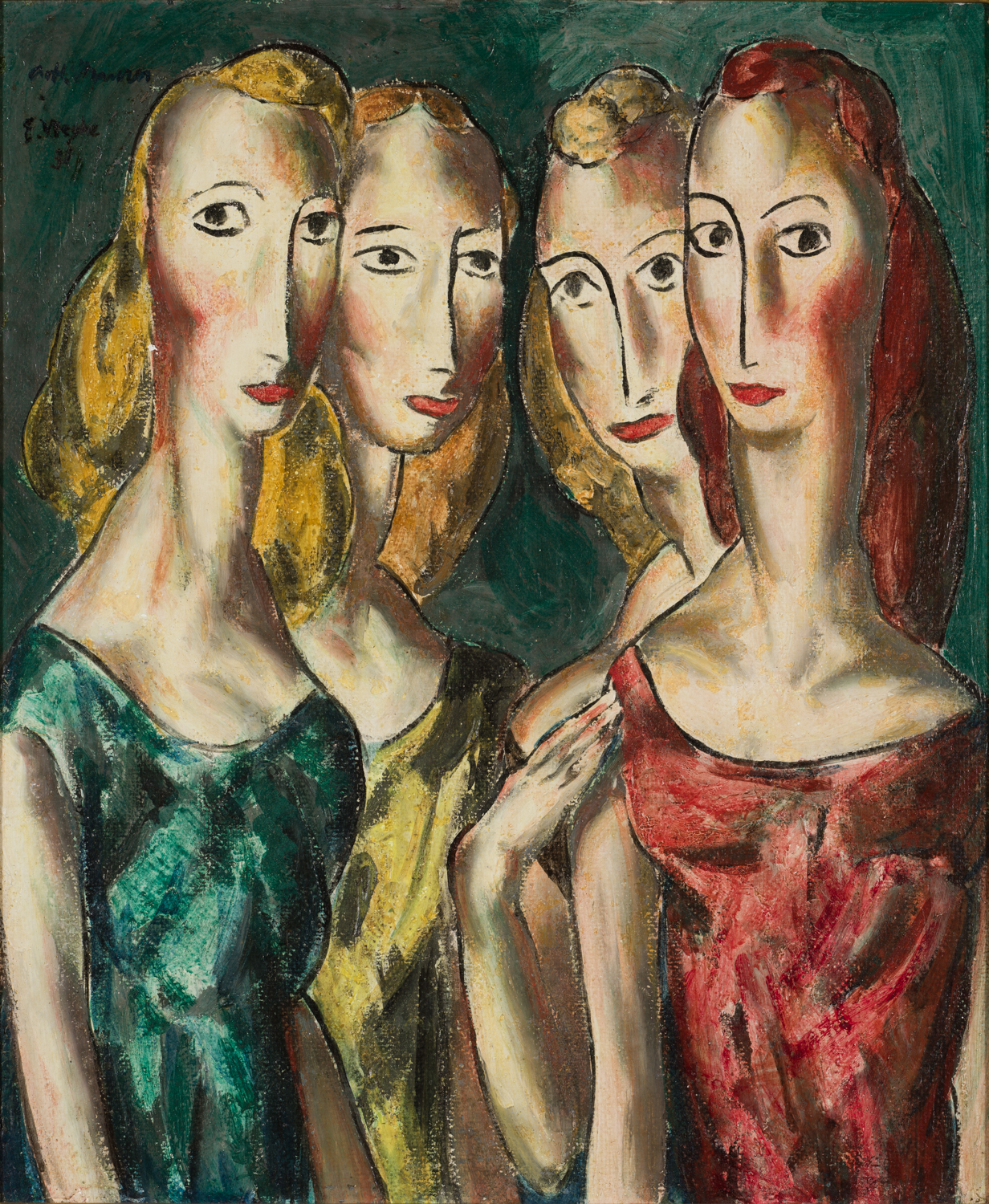Alfred H. Maurer
Alfred Maurer is often acknowledged as the first American Modernist painter, moving through a number of stylistic phases: Aestheticism, Ashcan, Tonalism, Fauvism and Cubism. Born in 1868 in New York City to German immigrants, his father, Louis Maurer, was a Currier and Ives artist who helped to foster his son’s artistic career. In 1884, at the age of 16, Maurer joined the family lithographic printing business, Heppenheimer and Maurer. He continued working as a commercial and graphic artist while receiving formal art training at The National Academy of Fine Arts. In 1897, Maurer moved to Paris in pursuit of a European cultural and artistic experience, where he remained for nearly seventeen years.
Maurer enrolled in classes at the Académie Julian, a school whose curriculum promoted French academic art training. Maurer’s focus, however, was on the anti-academic work of James Abbott McNeill Whistler. His emphasis on the abstract qualities of color and form and the emotive life of a subject began to alter Maurer’s approach to painting. Between 1905 and 1907, Maurer moved away from Tonalism towards Fauvism, a shift influenced by his relationships with patrons Gertrude and Leo Stein, and artists Henri Matisse, and Paul Cezanne. He began to use the Fauves’ radical palette of strong non-naturalistic colors and experimented with quick, expressive brushstrokes.
Maurer applied his newfound modernist language to his subsequent landscapes, still lifes, florals and pictures of women. The first major exhibition of his Fauvist works was a two-man show with John Marin at Alfred Stieglitz’s “291” Gallery in 1909. Maurer exhibited four of his works in 1913 at the Armory Show, where he earned critical acclaim for his avant-garde style. Following the advent of World War I in Europe in 1914, Maurer was forced to return to New York, ending a fruitful and productive period in France. In his haste, Maurer left nearly 250 paintings in his Paris studio, many of which were lost over time.
In the 1920s, Maurer became an important artistic pioneer of synthetic cubism, encouraged by his friendships with Marsden Hartley and Arthur Dove. The works he produced between 1927 and 1932 are most expressive of his unique style and are acknowledged as his most innovative. Some of the most remarkable examples from this series are tabletop still lifes and portraits of women presented alone or in pairs. In 1924, gallerist Erhard Weyhe purchased every painting in Maurer’s studio for a series of exhibitions in his New York gallery. Weyhe would represent Maurer for the remainder of his career.
The present work, Four Sisters, represents a dominant theme in Maurer’s late career, depicting pairs of women in various painting styles. The painting relates to an earlier work from 1927 sharing the same title, in which two sets of sisters are posed and styled in a similar fashion to the present work (fig. 1). In both works, Maurer placed the four figures closely together and painted their elongated forms from the torso up. They wear bright, jewel-toned dresses and stand against a dark background, accentuating their vibrant clothing and their porcelain skin.
Maurer’s swift artistic ascent was met with a tragic end, when he took his own life after the death of his father in 1932. He left a large, and diverse body of modernistic work that would go on to impact future generations of American artists. Today, Maurer’s work is in numerous public and private collections, including the Barnes Foundation, The Brooklyn Museum, the Crystal Bridges Museum of American Art, and the Smithsonian American Art Museum, among others.
Alfred H. Maurer
Four Sisters, 1931
Oil on board
21 1/2″ x 18″
Signed, dated and inscribed: E. Weyhe upper left
Provenance
Vanderwoude Tananbaum Gallery, New York
Salander O’Reilly Galleries, Inc., New York
Private Collection, New York
Christie’s, New York, May 19, 2005, lot 211, (estimate $70,000-$100,000, sold for $132,000)
Mary Anne and Eugene A. Gargaro, Jr. Collection, Grosse Pointe Shores, Michigan, acquired from the above

